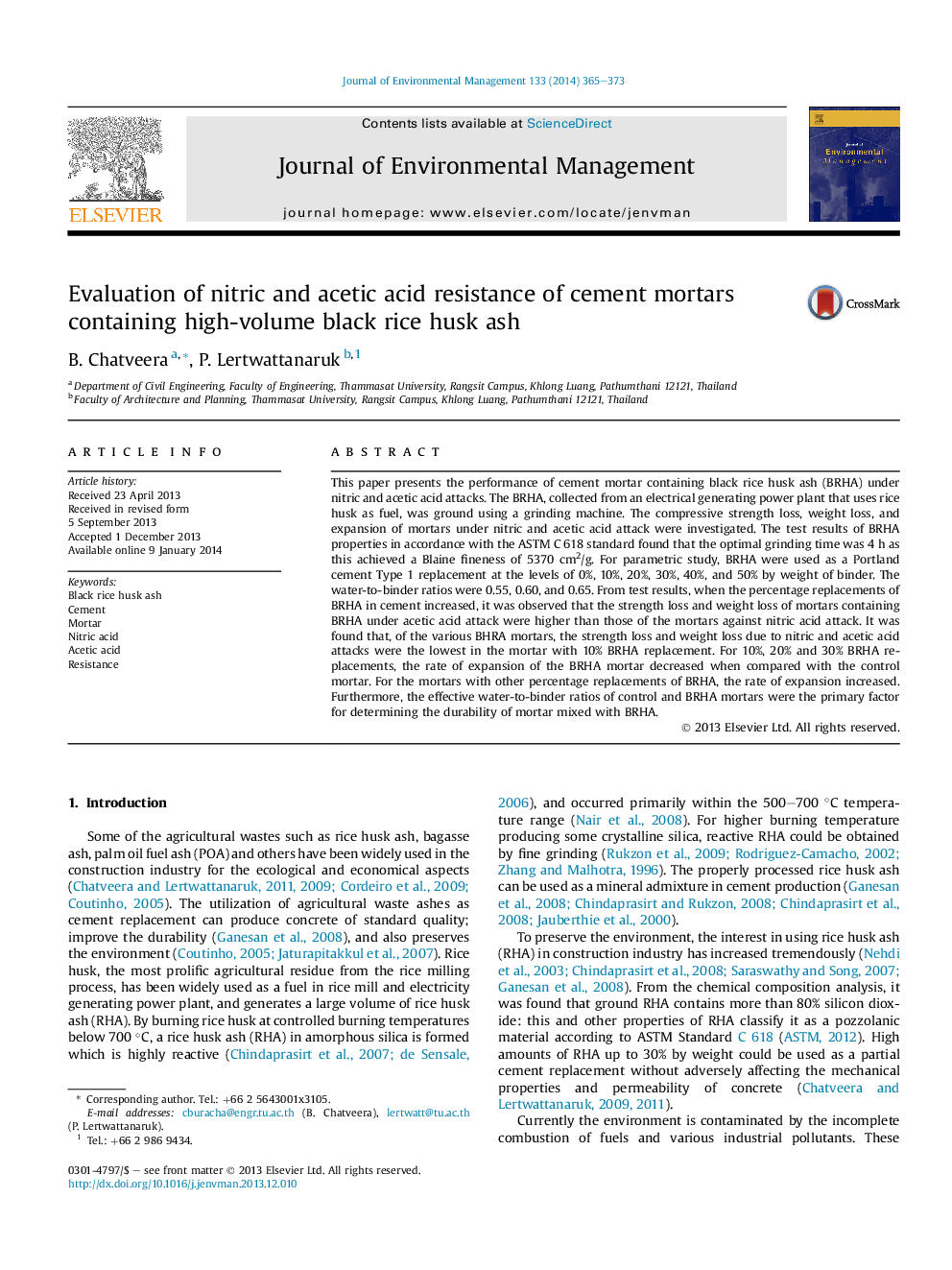| کد مقاله | کد نشریه | سال انتشار | مقاله انگلیسی | نسخه تمام متن |
|---|---|---|---|---|
| 1055856 | 1485279 | 2014 | 9 صفحه PDF | دانلود رایگان |
• The optimal grinding time for black rice husk ash (BRHA) is 4 h.
• We investigated durability of BRHA mortars under nitric and acetic acid attacks.
• Up to 30% of ground BRHA replacing cement yields a positive effect on durability.
• Increasing the water-to-binder ratio tends to have a negative effect on durability.
• Durability of mortars under acetic acid attack was lower than those of nitric acid.
This paper presents the performance of cement mortar containing black rice husk ash (BRHA) under nitric and acetic acid attacks. The BRHA, collected from an electrical generating power plant that uses rice husk as fuel, was ground using a grinding machine. The compressive strength loss, weight loss, and expansion of mortars under nitric and acetic acid attack were investigated. The test results of BRHA properties in accordance with the ASTM C 618 standard found that the optimal grinding time was 4 h as this achieved a Blaine fineness of 5370 cm2/g. For parametric study, BRHA were used as a Portland cement Type 1 replacement at the levels of 0%, 10%, 20%, 30%, 40%, and 50% by weight of binder. The water-to-binder ratios were 0.55, 0.60, and 0.65. From test results, when the percentage replacements of BRHA in cement increased, it was observed that the strength loss and weight loss of mortars containing BRHA under acetic acid attack were higher than those of the mortars against nitric acid attack. It was found that, of the various BHRA mortars, the strength loss and weight loss due to nitric and acetic acid attacks were the lowest in the mortar with 10% BRHA replacement. For 10%, 20% and 30% BRHA replacements, the rate of expansion of the BRHA mortar decreased when compared with the control mortar. For the mortars with other percentage replacements of BRHA, the rate of expansion increased. Furthermore, the effective water-to-binder ratios of control and BRHA mortars were the primary factor for determining the durability of mortar mixed with BRHA.
Journal: Journal of Environmental Management - Volume 133, 15 January 2014, Pages 365–373
